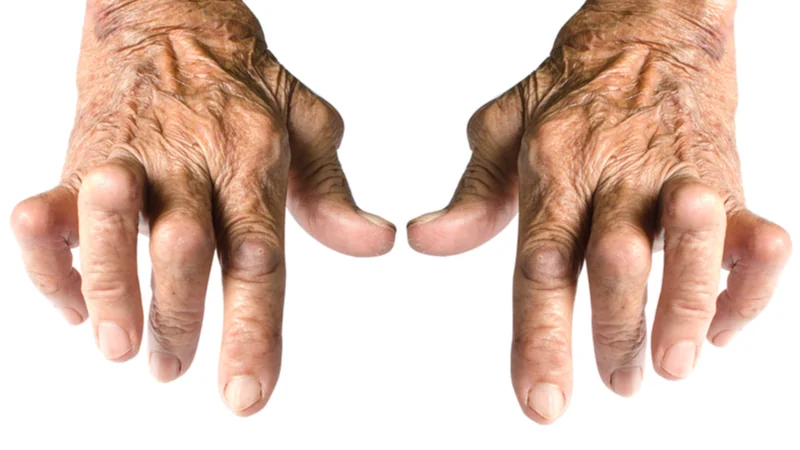In a paper published in Nature Aging, a group of scientists outlines a previously unknown pathway that leads to osteoarthritis and describes a promising treatment [1].
Less than a killer, more than a nuisance
There are plenty of deadly age-related diseases, and then there are others that shorten our healthspan rather than lifespan, making the last parts of our lives miserable. These include osteoarthritis (OA), the age-related degradation of cartilage that causes pain, inflammation, and frailty and can severely limit freedom of movement. This last part means that OA indirectly affects mortality by keeping people from being physically active [2].
Despite being the most prevalent degenerative joint disease, with 237 million people affected worldwide, and the leading cause of chronic disability among the elderly, OA has no FDA-approved treatments, and its molecular mechanisms are poorly understood [3].
Is arthritis caused by a pathway?
Cartilage is a peculiar tissue. Just like bone, it consists mostly of extracellular matrix (ECM) with rare inclusions of cells – in this case, chondrocytes – that excrete the molecules that the ECM is built from. Chondrocytes are relentlessly building and repairing cartilage, but their function, just like that of other cell types, gets disrupted as we age.
Cell-ECM relations are regulated by numerous proteins, including kindlins, an obscure family of proteins discovered in the 1990s. One of them, kindlin-2, plays an important role in the formation of focal adhesions: large molecular assemblies that transmit mechanical force and chemical signals between the cell and the ECM. Kindlin-2 is abundant in healthy articular chondrocytes, but its levels dwindle with age, even more so in OA-affected joints. In chondrocytes that reside in calcified cartilage, kindlin-2 expression is all but lost.
Two other proteins have been linked to OA: p-Stat3 and Runx2. Previous research suggested that those three proteins might constitute a pathway important to the development of OA.
To investigate the effect of kindlin-2 loss on the development of OA, and its relationships with p-Stat3 and Runx2, the researchers started by creating the first kindlin-2-knockdown strain of mice in the world. Kindlin-2 deficiency in this strain is conditional and can be turned on by a drug.
Knockdown of kindlin-2 increased protein levels of both p-Stat3 and Runx2 in articular chondrocytes and caused a dramatic loss of cartilage, leading to the accelerated development of OA in the mice.
The levels of kindlin-2 were reduced and the levels of p-Stat3 and Runx2 also increased in aged wild-type mice, thus confirming the crucial role of aging in OA development. Moreover, the severity of aging-induced OA was highly correlated with the magnitude of kindlin-2 downregulation as well as with p-Stat3 and Runx2 upregulation.
The researchers then looked at two types of double-mutants: mice with both kindlin-2 and p-Stat3 knocked out as well as mice with both kindlin-2 and Runx2 knocked out. In both cases, despite kindlin-2 deficiency, the accelerated development of OA did not happen.
Understanding the pathway
A picture of a pathway began to emerge. It had already been established that the loss of kindlin-2 caused both p-Stat3 and Runx2 upregulation. Blocking p-Stat3 expression in chondrocytes both prevented Runx2 accumulation and decreased the OA damage caused by kindlin-2 deletion. On the other hand, blocking Runx2 reversed OA symptoms as well but without downregulating p-Stat3. The scientists arrived at the conclusion that kindlin-2 deficiency causes OA by upregulating Runx2 in a p-Stat3-dependent manner. This discovery of a pathway enables scientists to effectively choose a target, and some proteins might be easier, safer, and more effective to target than others.
Finally, the researchers treated mice suffering from OA with kindlin-2. They injected a cocktail of viral vectors carrying a kindlin-2-coding DNA sequence directly into OA-affected cartilage. A single treatment noticeably alleviated OA symptoms. The scientists admit that they did not follow up on the mice long enough to determine the long-term efficacy of the treatment, but the results are very encouraging nonetheless.
Conclusion
OA is a highly prevalent disease of aging that adversely affects health and quality of life in old age. It is also a known comorbidity for other, deadlier age-related diseases. Given its prevalence, finding a cure for OA is a pressing problem. This study suggests a previously unknown molecular mechanism of OA development and even outlines a possible treatment. The authors promise to test it on primates soon, which means an effective cure for OA might be not that far away.
Literature
[1] Wu, X., Lai, Y., Chen, S., Zhou, C., Tao, C., Fu, X., … & Xiao, G. (2022). Kindlin-2 preserves integrity of the articular cartilage to protect against osteoarthritis. Nature Aging, 1-16.
[2] Hochberg, M. C. (2008). Mortality in osteoarthritis. Clinical & Experimental Rheumatology, 26(5), S120.
[3] Chen, D., Shen, J., Zhao, W. et al. Osteoarthritis: toward a comprehensive understanding of pathological mechanism. Bone Res 5, 16044 (2017).





